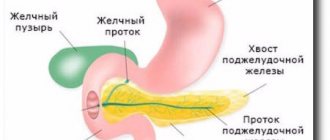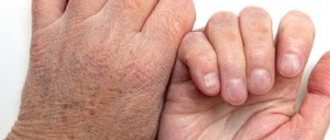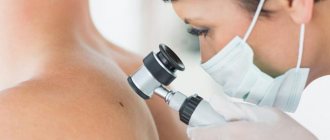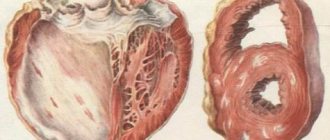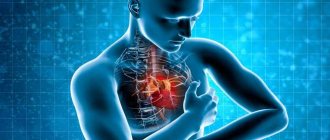Development mechanism
The pathogenesis of the pathological process is based on a group of factors. If we talk about them in a generalized format:
Breathing problems
They are especially common. In this case, the oxygen concentration itself decreases. During biochemical processes, carbon dioxide is released into the riverbed. This is a harmful, waste product. It needs to be brought out faster.
And this is where the problem arises. Not only are the lungs unable to deliver enough oxygen, but they are also unable to eliminate harmful gases that are toxic to the body.
The concentration grows, poisoning of all tissues and systems of the body begins. Need urgent medical attention.
Cardiovascular disorders
Another common factor in the development of the pathological process. There are a lot of diseases that cause cyanosis. Often we are talking about heart defects and functional disorders.
It makes sense to check this part with a cardiologist. The mechanism is based on a violation of blood transfer, its stagnation in the large and small circles.
Hence dysfunctional disorders. The heavier they are, the worse the situation is overall.
Blood abnormalities
In some cases, red blood cells themselves are not able to combine normally with oxygen and form full-fledged hemoglobin. This leads to the accumulation of carbon dioxide, which begins to poison the patient's entire body.
As a rule, the problem is acquired, but there are congenital types of the disorder.
It is necessary to approach the diagnosis carefully. A hematologist works with patients of this profile.
Endocrine disorders
Deviations from hormonal levels. They are extremely common. In this case, the tissues themselves are unable to normally receive and absorb oxygen. They produce carbon dioxide as usual.
The concentration of carboxyhemoglobin increases several times. Cyanosis is pronounced and clearly visible. Treatment is very difficult.
Intoxication processes
In case of poisoning with salts of heavy metals, vapors of acids and volatile compounds, cellular respiration is disrupted. Rapid ischemic processes occur that pose a danger to life and health. Urgent inpatient correction is needed.
These are the basic mechanisms of the problem. Typically they occur individually and not as a system. There are exceptions to what has been said.
Associated symptoms
With cardiac etiology of cyanosis, the patient is bothered by pain in the heart area, spreading to the left side of the chest, arm, and shoulder blade. A person becomes weak, restless, cannot sit still, and is haunted by the fear of death. When measuring blood pressure, the readings are reduced, the pulse is weak, rapid and thread-like.
If the cause of the symptom is a violation of cerebral circulation, then there are complaints of headache, dizziness, blurred vision, flickering of spots before the eyes, loss of coordination, weakening of the limbs on one side of the body, slurred speech, and inability to move independently.
With respiratory cyanosis, the patient is concerned about shortness of breath, weakness, headache, and drowsiness. Usually the tips of the fingers and toes, as well as the face, turn blue. When the condition normalizes, the symptom disappears; when the pathology worsens, it spreads to healthy areas.
Additional symptoms are muscle and joint pain, increased body temperature, nausea, vomiting, increased activity of the sweat glands, and abdominal pain. The latter is observed in case of poisoning of the body with toxic substances or low-quality products.
In advanced cases, not only the skin, but also the mucous membranes turn blue. In the absence of timely treatment, death may occur as a result of suffocation, myocardial infarction, cerebrovascular accident or other pathologies.
Types of cyanosis
The pathological condition can be divided on several grounds. A generally accepted way of typing a disorder is by origin.
Accordingly, they are called:
- Acrocyanosis is a blue discoloration of the tip of the nose, lips, fingers, that is, the end parts of the human body. Occurs in cardiovascular disorders and diseases associated with insufficient oxygen supply (respiratory disorders).
- Central or diffuse cyanosis. accompanied by a change in the shade of all tissues of the body as a whole, without individual localizations. It is especially common in circulatory pathologies and respiratory failure. Treatment must be carried out quickly, because the process is generalized and affects all systems.
- Peripheral variety. When your fingers, nails, arms, legs, face turn blue. In a word - limbs and their individual segments or the head area. A pathological change occurs with intense ischemia against the background of problems with the blood, heart, defects or other changes in cardiac structures.
- Other local varieties. When the process affects only certain parts of the body. For example, the mucous membranes of the oral cavity and genital structures acquire a bluish tint.
It is impossible to say exactly why. The development factor can be anything: from a local inflammatory, degenerative process to a generalized blood flow disorder.
Cyanosis can be divided into several more varieties:
- By location: total or local, when the change in shade covers individual areas of the body.
- By exact location: perioral cyanosis (around the nasolabial fold) or distal (affects the limbs, individual segments of the arms or legs).
- By duration: permanent (which does not end at all and characterizes the patient’s condition over a long time) or transient (develops in a paroxysmal manner: it begins and resolves itself, without outside intervention from doctors).
These classifications are actively used in medical practice to describe the pathological process. Determining the vector of diagnosis, developing a strategy for therapeutic measures.
Etiology
With dysfunction of the heart and blood vessels, the blood cannot fully deliver oxygen to the cells and tissues of the body, which leads to the development of hypoxia. In this case, cyanosis appears against the background of fatigue, fatigue, headache, insomnia, chest pain, tachycardia, shortness of breath, and disorientation.
Cyanosis is a clinical sign of various diseases of internal organs:
- Heart and blood vessels - heart defects, ischemic heart disease, pulmonary embolism, varicose veins and atherosclerosis,
- Blood – polycythemia and anemia,
- Respiratory system - pneumonia, pneumothorax, pleurisy, pulmonary edema, bronchiolitis, respiratory failure, pulmonary embolism, infection, COPD, emphysema, breath holding, croup, foreign bodies, inflammation of the epiglottis,
- Poisoning with poisons or medications - nitrites, phenacetin, nitrobenzene-containing drugs, sulfonamides, aniline, sedatives, alcohol,
- Drug overdoses,
- Cramps that last a long time
- Epilepsy,
- Anaphylactic shock, Quincke's edema,
- Food poisoning,
- Particularly dangerous infections - cholera, plague,
- Carcinoid of the small intestine.
There are congenital familial forms of methemoglobinemia with an autosomal recessive mode of inheritance.
In healthy people, cyanosis can occur during hypothermia, at high altitudes, in a stuffy, unventilated room, or during a flight without oxygen equipment.
Causes
Now it’s worth specifying the factors for the development of the pathological process. Broadly speaking, the culprits could be:
Heart defects
Classic example. Most often we are talking about damage to the valves of cardiac structures: tricuspid, aortic or mitral. It doesn't really matter in the context of the topic. The point is different.
Blood must move strictly in one direction. When a defect develops, the valve cannot stop the reverse flow. The so-called regurgitation occurs.
Accordingly, the functional blood volume decreases. There is not enough of it to provide the tissues with oxygen. But carbon dioxide still penetrates the body directly and indirectly. After all, waste products must be removed in any case.
The cause of cyanosis of the skin is an inadequately high release of carbon dioxide from the tissues, which leads to altered coloration of the mucous membranes and skin. Other defects are also possible. They are treated promptly, under the supervision of a cardiac surgeon.
Inflammatory heart diseases
Slightly less common. Basically, these are myocarditis or rheumatism. The first process is infectious. The second is autoimmune.
The reason is pretty much the same. The body is not able to supply the body and all its systems with sufficient blood, nutrients and oxygen. And the products of biochemical reactions, harmful substances, are excreted into the body at the same rate. The body cannot cope with such a load.
Specific treatment is required under the supervision of a cardiologist. The best thing is in a hospital.
Perioral cyanosis (around the nasolabial triangle) develops against the background of damage to cardiac structures, blood vessels and insufficient blood circulation, which becomes a consequence of inhibition of cellular respiration and oxygen metabolism.
Functional disorders in the functioning of cardiac structures
For example, various forms of arrhythmias. When the intensity of contractions changes, as does their nature, cardiac output as a whole also decreases. This is an understandable phenomenon.
Cyanosis of the skin is caused by an insufficient amount of simultaneously circulating blood, an increased direct release of carboxyhemoglobin, which gives the dermis such a specific shade.
Coronary insufficiency
Simply put, poor blood circulation in the myocardium. The heart provides the entire body with nutrition and oxygen, but it itself requires a huge amount of resources to work. If support is weakened, pathological processes begin.
Coronary insufficiency exists in two main forms: angina and heart attack. That is, subacute and critical, emergency conditions. Both are potentially fatal, it's just a matter of time.
Trophic and respiratory disorders lead to a change in the skin tone of the nasolabial triangle to bluish.
A heart attack and its consequences
If the patient manages to extricate himself from a dangerous situation, a new risk awaits him. The dead parts of the heart can no longer function. A rough scar is formed. This is the so-called cardiosclerosis.
It is useless to fight it, only supportive therapy remains. You need to constantly take medications that optimize oxygen metabolism.
Otherwise, cyanosis and accompanying pathological processes are formed: heart failure, ischemia, hypoxia of all tissues, starting with the heart and brain itself. This is fraught with a recurrence of a heart attack or stroke.
Asthma
It is becoming more common even among younger patients. The essence of the disorder is a sharp narrowing of the lumen of the bronchi. Very often this is a manifestation of an allergic reaction.
Essentially, we are talking about an autoimmune disorder. The concentration of red blood cells does not change, there is a lack of oxygen, and the amount of carbon dioxide remains the same.
The cause of cyanosis of the nasolabial triangle is the increased production of carboxyhemoglobin, a transporter for waste products.
Inflammatory processes of the respiratory tract
A cyanotic tint to the nasolabial fold is possible with pneumonia, bronchitis and other inflammatory processes of the respiratory tract. Occurs against the background of a previous or acute infection. As a complication or primary disorder.
The essence is the same: swelling and damage to the bronchial tree (lumen of the respiratory tract). Recovery almost always needs to be done in a hospital setting. The patient should be monitored very carefully.
Respiratory failure of any etiology
Against the background of an inflammatory process, a state of shock, allergies or for other reasons.
Cyanosis of the lips, nose and other structures develops against the background of the release of carbon dioxide into the blood, the formation of excess carboxyhemoglobin molecules, as in previous cases.
Anemia
Oddly enough, the cause is common, but the manifestation is almost unnoticeable. At least in the early stages of the disease.
In almost 70% of cases, the pathology is quite mild. That is why the sign is almost invisible.
With the development of sub- and decompensation, the opposite is true. Facial cyanosis occurs due to excessive accumulation of carboxyhemoglobin in red blood cells.
Even against the background of a deficiency of the necessary protein, the remaining functional molecules take on compensatory work. Oxygen is added poorly, but carbon dioxide is enough for the wave.
A paradoxical situation arises: cellular respiration is greatly changed, but the transport of waste products remains at the same level. The more intense the pathological process, the worse the situation with the symptom and in general.
Some forms of poisoning
For example, sulfur compounds, cyanide fumes, acidic volatile substances, salts of heavy and alkali metals. There are many options.
The same thing occurs with the systematic use of hormonal drugs, anti-inflammatory and cardiac drugs without the prescription of a specialist.
Atherosclerosis
Acute narrowing of large vessels of the body or deposition of harmful cholesterol on their walls. Blood flow becomes too weak to provide oxygen to the tissues. Ischemic processes begin. This is the main factor in the formation of the problem.
Thrombosis of various types and forms
About the same thing, only the culprit is not an atherosclerotic plaque, but a blood clot enriched with the sticky protein fibrin.
Most often, blood clots affect the lower extremities. Also the heart, but in this case there is much less time for treatment.
Drug intoxication
The use of heroin, opioids, and synthetic substances is especially dangerous in this regard.
Diffuse cyanosis is a consequence of a general, generalized circulatory disorder, insufficient cellular respiration of tissues. Particularly after using drugs.
Too much alcohol
Causes poisoning of all body structures. This is how ethanol breakdown products act, which are very toxic and provoke a lot of symptoms besides (for example, a hangover).
Some types of infectious diseases
From a common cold, when waste products of microorganisms block access to oxygen, to something significant.
The so-called periorbital cyanosis is known - blue discoloration of the area around the eyes, cheeks and ears. This symptom often occurs with tuberculosis and concomitant respiratory failure.
The list is approximate. In fact, the disorder can be triggered by any disease, damage to the lungs, heart, blood vessels, and even other conditions, for example, cancer or those associated with bone marrow dysfunction.
External manifestations
The cause of blue skin is pathological hemoglobin accumulated in the blood, depleted of oxygen. Blue discoloration of parts of the body does not affect health, but this phenomenon indicates that the patient needs emergency medical care.
Manifests itself in the following diseases:
- heart disease and respiratory diseases;
- venous insufficiency and Raynaud's disease;
- oncology, neuralgia, pancreatitis;
- with chest deformation;
- for food poisoning;
- plague, cholera, drug and alcohol overdose.
Blueness of the skin is often accompanied by the following symptoms:
- tachycardia;
- cough, shortness of breath;
- feverish condition;
- fever, weakness;
- varying degrees of pain.
Blue skin on certain parts of the body means:
- nasolabial triangle – congenital heart defect, heart disease;
- skin around the eyes – physical fatigue, exhaustion, nervous breakdown;
- genital organs - age-related changes;
- cervix - pregnancy;
- skin – poor circulation.
The blueness of the skin is affected by gas exchange between blood and oxygen, the speed of blood movement in the vessels and the body’s ability to bind oxygen to hemoglobin.
Diagnostics
The examination is carried out under the supervision of cardiologists, pulmonologists and therapists. Subspecialty doctors are hired as needed.
A sample list of events would be:
- Questioning the patient about complaints and symptoms of the pathological process.
- Taking a history to better understand the origin of the disorder.
- ECG, ECHO-Kg. In order to investigate the condition of the heart. Anatomical (structural) and functional, detect defects and other disorders.
- Spirometry. Function of external respiration. To assess the condition of the pulmonary structures.
- General blood tests, biochemical, hormone tests. An expanded picture of lipids (lipid profile) is also needed.
- Allergy tests.
- Serological studies, bacteriological cultures, PCR, ELISA and other methods.
The question is put to rest by a specialized specialist or a group of doctors.
Treatment
Therapy depends on the specific pathological process. Let's look at the problems in order with possible solutions:
- Heart defects. The operation is indicated. Plastic or prosthetics. For example, replacing a valve with an artificial one. There are no other options.
- Myocardial inflammation. Antibiotics and beta blockers are prescribed to relieve rhythm disturbances. If necessary, use cardioprotectors (for example, Mildronate).
- Functional deviations from cardiac structures. Protective agents (Riboxin and analogues), antiarrhythmics, and beta blockers are indicated as support measures.
- Coronary insufficiency. The same drugs are used. Plus, you need to find the root cause and eliminate it.
- Heart attack. The list is the same. Additionally, organic nitrates (not always), vitamins are used, and intravenous infusions of solutions are performed.
- Asthma. Bronchodilators (Berodual and similar), inhaled corticosteroids, oral hormones (Prednisolone and others), first and third generation antihistamines (Cetrin, Suprastin, Tavegil).
- Inflammation of the respiratory tract. Antibiotics, antivirals, hormonal drugs and similar.
- Respiratory failure. Glucocorticoids, bronchodilators. They look for the primary cause and carry out correction. In extreme cases, the patient is connected to a ventilator.
- Anemia. Iron supplements, B vitamins, also need to eliminate the cause of insufficient absorption of nutrients.
- Poisoning. Detoxification measures, introduction of antidotes. The correction is carried out in the hospital.
- Atherosclerosis. Statins, fibrates, nicotinic acid, special diet, giving up bad habits.
- Thrombosis. Antiplatelet agents, anticoagulants, also thrombolytics.
- Drug addiction and alcoholism. Detoxification measures, coding, rehabilitation.
- Infections. Antibiotics, anti-inflammatory drugs, analgesics, antipyretics, as well as antiviral and immunomodulators are prescribed.
There are a lot of options. The strategy needs to be developed individually.



